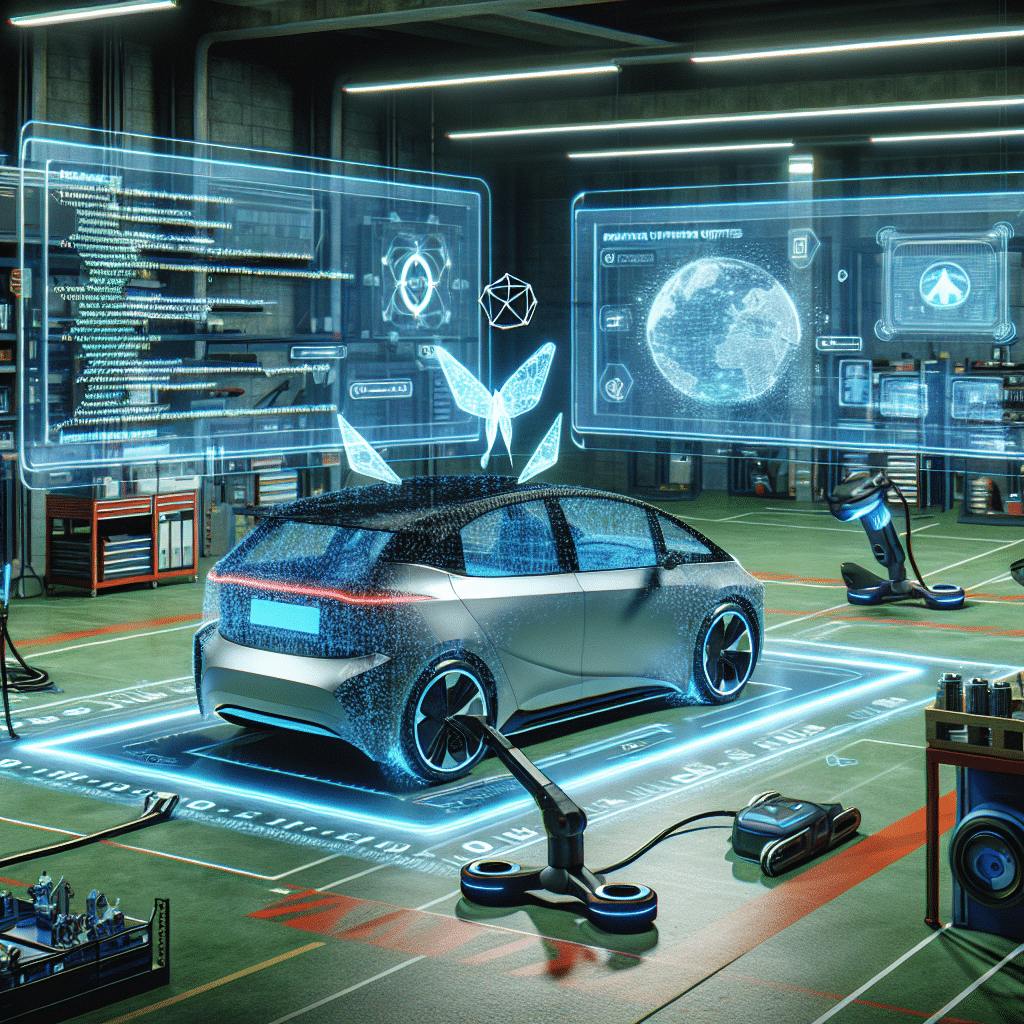Understanding Software Updates in Electric Vehicles: Importance and Maintenance Tips
The Role of Software Updates in EVs
Electric vehicles (EVs) are not just defined by their electric drivetrains; their functionality relies heavily on advanced software systems. Unlike traditional vehicles, EVs incorporate complex software to manage everything from battery performance to infotainment systems. Regular software updates are essential to ensure optimal functioning, enhance user experience, and maintain vehicle safety.
How Software Updates Enhance Performance
Software updates in EVs can significantly boost the vehicle’s efficiency. Updates may optimize battery management systems, improve regenerative braking algorithms, or adjust settings for acceleration and torque distribution. These changes enhance the overall driving experience and can even extend the vehicle’s range. For example, Tesla frequently rolls out over-the-air updates that enhance battery performance and provide new features, often making an older model perform better than it did at purchase.
Addressing Safety Through Updates
Safety is paramount in any vehicle, and EV manufacturers recognize this by providing software updates that address vulnerabilities. Cybersecurity is a growing concern, especially for connected vehicles. Regular updates fix known vulnerabilities and mitigate risks associated with hacking and unauthorized access. Ensuring your EV is up-to-date is critical for maintaining its integrity and protecting sensitive data.
User Experience Enhancements
Driving an EV is not purely about transportation; it’s also about the experience. Software updates enhance infotainment systems, improve navigation functions, and even introduce new media streaming options. Many manufacturers listen to user feedback and incorporate desired features in subsequent updates. This responsiveness fosters strong customer loyalty and keeps users engaged.
Types of Software Updates
-
Over-the-Air (OTA) Updates: This method allows manufacturers to deliver updates directly to the vehicle without requiring a visit to a dealership. OTA updates can be used for system enhancements, feature additions, and bug fixes.
-
Manual Updates: These can involve hooking the vehicle up to a computer or visiting a dealership to install updates. Manual updates are less common but necessary for certain critical updates that impact hardware.
-
Scheduled Updates: Some manufacturers allow users to schedule updates during off-hours or when the vehicle is not in use, minimizing inconvenience.
The Importance of Regular Maintenance
In addition to software updates, regular maintenance is vital for the longevity of EVs. While they generally require less maintenance than internal combustion engine vehicles, neglecting key aspects can lead to performance degradation. Here’s what to focus on:
Battery Maintenance
The battery is the heart of an EV. Although most modern EVs come with warranties spanning 8 to 10 years, ensuring battery health is crucial. Regularly checking the state’s charge (SOC) and state of health (SOH) can help identify potential issues early. Maintain a charging routine that accommodates both rapid charging and slower, level 2 charging to prolong battery life.
Tire Care
Electric vehicles are typically heavier due to their batteries, leading to increased tire wear. Regularly checking tire pressure, tread depth, and alignment can help prevent issues related to uneven wear and can significantly improve safety and efficiency. Manufacturers often provide specific recommendations regarding tire pressure that should be adhered to.
Brake Maintenance
EVs utilize regenerative braking, which reduces wear on brake pads. However, it’s crucial to monitor brake systems periodically. This includes checking the brake fluid, pads, and the overall functionality of the braking system to ensure safety.
Cooling System Care
Thermal management is critical in EVs, particularly for the battery and motor. Inspecting the cooling system regularly to prevent overheating and maintain efficient operation is essential. Ensure that coolant levels are adequate and that there are no leaks.
Software Recalibrations and Diagnostics
In conjunction with regular maintenance, recalibrating software systems can provide insights into the health of various vehicle components. Diagnostic tools, often available at service centers, can read error codes, helping pinpoint issues related to the vehicle’s software and hardware.
Staying Informed and Engaged
As technology evolves, new software features and maintenance practices will emerge. Engage with your vehicle’s manufacturer through newsletters and forums to stay updated on the latest opportunities for enhancement. Many manufacturers have designated apps that provide timely notifications about software updates and maintenance needs.
Conclusion: The Synergy of Software and Hardware Maintenance in EVs
In the rapidly advancing world of electric vehicles, keeping your EV updated with the latest software is as important as performing regular hardware maintenance. Staying attuned to both software updates and routine maintenance practices not only ensures optimal performance but also enhances safety, efficiency, and overall driving pleasure. Pay attention to your vehicle’s needs and make technical compliance a priority for a long-lived, high-performing electric vehicle.
